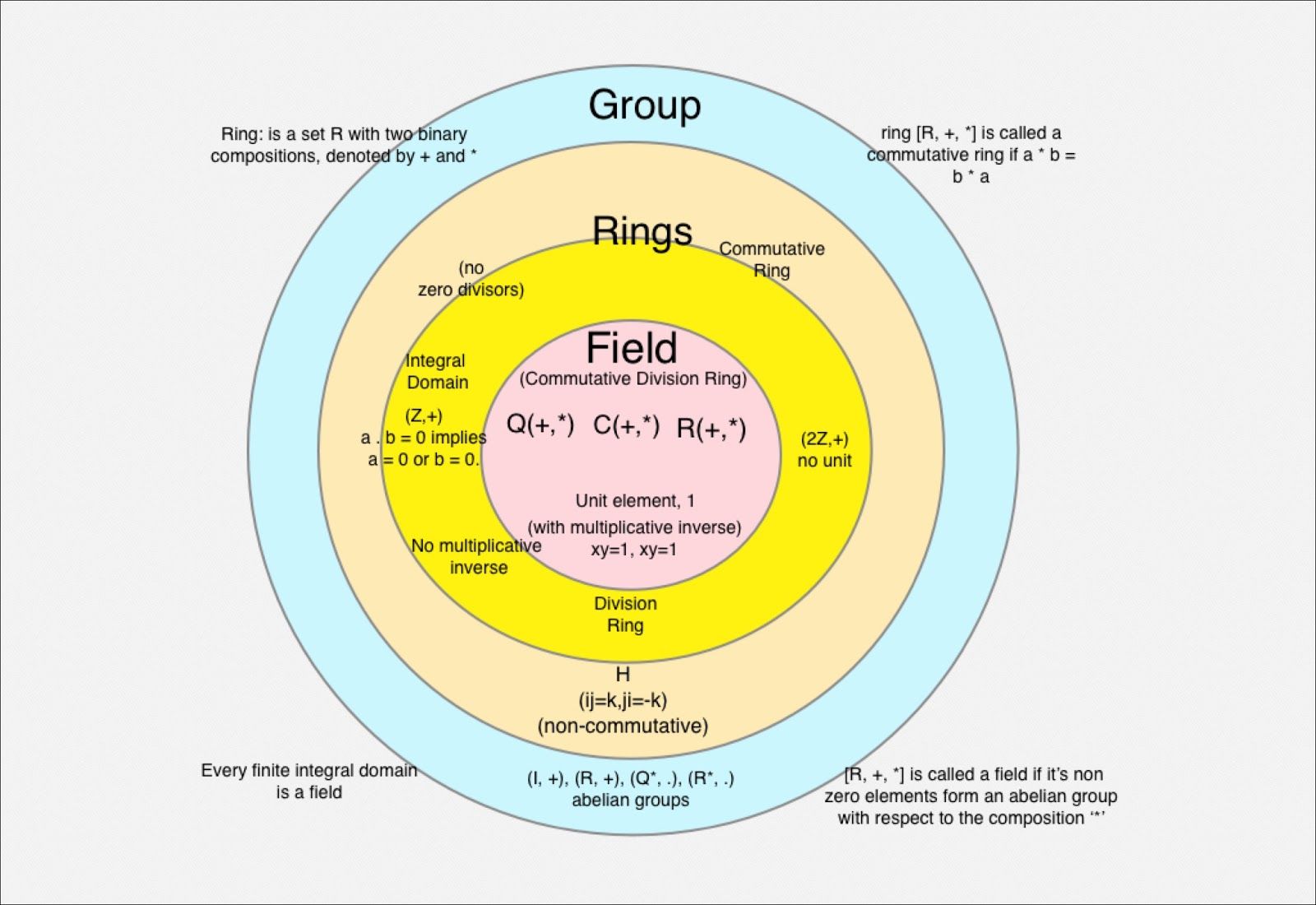Equations of Freedom (Money)

Foundations of Cryptography: Groups, Rings, and Finite Fields
Building Blocks of Secure Systems
To understand the cryptographic principles underpinning decentralized systems like Bitcoin and Monero, we begin with three mathematical pillars: groups, rings, and fields. These structures enable the privacy, security, and trustlessness of modern cryptocurrencies.
[NOTE: Written by DeepSeek R1. Still learning about this topic myself; these are my notes so far.]
1. Cryptographic Essentials: Groups, Rings, and Fields
Groups: Operations with Structure
A group is a set G paired with an operation (e.g., addition, multiplication) satisfying:
- Closure: For all a, b ∈ G, the result of a · b stays in G.
- Associativity: a · (b · c) = (a · b) · c.
- Identity: An element e ∈ G exists such that a · e = e · a = a.
- Inverses: For every a ∈ G, there exists b ∈ G where a · b = e.
Examples:
- Integers ℤ under addition: Identity is 0; inverse of 5 is -5.
- Elliptic curve groups: The basis of Bitcoin’s ECDSA, where solving k · G = P (finding scalar k from public point P) is computationally infeasible.
Rings: Dual Operations
A ring adds a second operation to a group:
- Addition is commutative (abelian group).
- Multiplication is associative and distributive over addition.
Examples:
- Integers ℤ with addition and multiplication.
- Polynomial rings ℤ[x], crucial for constructing finite fields.
Fields: Division and Perfection
A field is a ring where every non-zero element has a multiplicative inverse. Key examples:
- Prime fields: Integers modulo a prime p (e.g., ℤ/7ℤ: 3⁻¹ = 5 in mod 7).
- Extension fields: Built by extending prime fields with irreducible polynomials (e.g., 𝔽₂⁸ used in AES).
2. Finite Fields: Cryptography’s Workhorse
Finite fields (Galois* fields) enable secure computation:
- Prime fields: Arithmetic modulo p, like Bitcoin’s ℤ/pℤ for large primes.
- Polynomial extensions: Construct 𝔽ₚⁿ by adjoining roots of irreducible polynomials.
Example: 𝔽₄
- Base field: 𝔽₂ = {0, 1}.
- Define 𝔽₄ = 𝔽₂[x]/(x² + x + 1). Elements: {0, 1, x, x+1}.
- x behaves like a root: x² ≡ x + 1 in this field.
3. Cryptography in Practice: Bitcoin and Monero
Bitcoin: ECDSA over Prime Fields
- Private keys: Integers k in ℤ/pℤ.
- Public keys: Points K = k · G on an elliptic curve (e.g., secp256k1).
Monero: Privacy Through Algebra
- Ring Signatures: Combine signatures using group operations.
- Stealth Addresses: Generate one-time keys via field arithmetic.
4. Sovereignty Through Mathematics
Bitcoin and Monero use openly verifiable structures:
- Prime fields for collision-resistant hashing.
- Elliptic curve groups for unforgeable signatures.
- Polynomial rings for efficient zero-knowledge proofs.
Conclusion: Equations of Freedom
Groups (ℤ, elliptic curves), rings (ℤ[x]), and fields (𝔽ₚ) are tools of liberation. By encoding rights into mathematical protocols, Bitcoin and Monero shift power from intermediaries to individuals.
Trust math, not middlemen.
Notes
*Évariste Galois, French mathematician. His last name is pronounced "Gal-wah" (/ɡalˈwa/ in IPA).
Sources
- DeepSeek R1 synthesis of its own training data plus the following additional sources:
- https://people.csail.mit.edu/madhu/ST12/scribe/lect03.pdf
- https://www-users.cse.umn.edu/~brubaker/docs/152/152groups.pdf
- https://people.maths.ox.ac.uk/flynn/genus2/sheets0405/grfnotes1011.pdf
- https://people.engr.tamu.edu/andreas-klappenecker/629/finite_fields.pdf
- https://www.geeksforgeeks.org/group-rings-and-fields-in-group-theory/
Inspired by: "Motivate The Math" Podcast, by Fundamentals and average_gary
- Motivate The Math: https://serve.podhome.fm/motivate-the-math_638723836566573210
